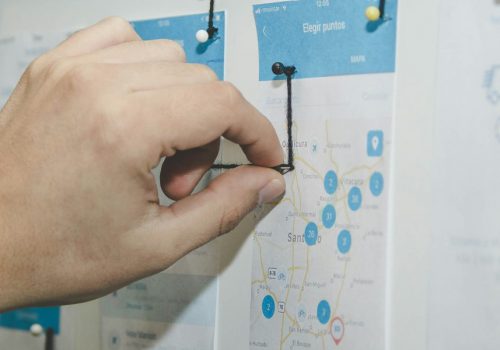In today’s fast-paced world, finding a balance between work and personal life has become increasingly challenging. The demands of our professional lives often seep into our personal time, leading to stress, burnout, and a diminished quality of life. However, attaining a healthy work-life balance is not an impossible achievement. By adopting effective strategies and prioritizing self-care, individuals can reclaim control over their lives and enjoy the benefits of a better-balanced lifestyle.
This article explores the importance of work-life balance, provides practical tips to achieve it, and highlights the positive impact it has on our well-being.
Understanding the Importance of Work-Life Balance
Work-life balance refers to the steadiness between one’s professional commitments and personal life. It involves distributing time and energy to various aspects, such as work, family, friends, hobbies, and self-care. Maintaining a good work-life balance is essential for several reasons. Firstly, it promotes mental and physical well-being, reducing the risk of stress-related illnesses and burnout. Secondly, it enhances productivity and job satisfaction, as you are more focused and motivated when you have time for relaxation and personal pursuits. Lastly, a healthy work-life balance strengthens relationships and fosters a sense of fulfillment and happiness.
Here are some key reasons why work-life balance matters:
- Health and Well-Being: Maintaining a good work-life balance is essential for our overall health. Continuous stress, long working hours, and neglecting personal needs can lead to burnout, fatigue, and various health issues. By finding a balance between work and personal life, we can reduce stress levels, improve our well-being, and enhance our ability to cope with challenges.
- Increased Productivity and Performance: Contrary to popular belief, working longer hours does not necessarily equate to increased productivity. In fact, overworking can lead to diminishing returns, as fatigue and stress can hamper cognitive function and creativity. When we prioritize time for rest, self-care, and personal activities, we replenish our energy and motivation, leading to higher levels of productivity, focus, and efficiency when we do work.
- Enhanced Relationships: A healthy work-life balance allows us to nurture and invest in our relationships with family, friends, and loved ones. Strong personal connections provide emotional support, a sense of belonging, and contribute to our overall happiness. When we have time for meaningful interactions and shared experiences, our relationships thrive, and we feel more connected and fulfilled in our personal lives.
- Personal Growth and Fulfillment: Achieving work-life balance enables us to pursue personal goals, hobbies, and interests that contribute to our personal growth and fulfillment. Engaging in activities outside of work allows us to explore our passions, develop new skills, and expand our horizons. It nurtures our sense of identity beyond our professional roles, leading to a greater sense of purpose and satisfaction.
- Prevention of Burnout: Burnout is a state of chronic physical and emotional exhaustion that results from prolonged work-related stress. It can lead to decreased motivation, cynicism, and reduced job satisfaction. Maintaining a work-life balance helps prevent burnout by providing opportunities for rest, relaxation, and rejuvenation. It allows us to recharge our energy and maintain a sustainable level of engagement and enthusiasm in our work.
- Increased Happiness and Well-Rounded Life: Striving for work-life balance is ultimately about creating a happier, more fulfilling life. It allows us to enjoy the fruits of our labor while still having time for personal pursuits, hobbies, and experiences that bring us joy and fulfillment. It enables us to lead a more wellrounded life where we can excel professionally while also nurturing our personal needs and relationships.
- Role Modeling for Others: By prioritizing work-life balance, we set an example for our colleagues, peers, and future generations. We show that success does not have to come at the expense of our well-being or personal lives. By role modeling a healthy work-life balance, we inspire others to seek their own balance and challenge the long-ongoing notion that work should consume all aspects of our lives.
Understanding the importance of work-life balance empowers us to take charge of our lives, make intentional choices, and create a sustainable and fulfilling lifestyle. It is a continuous journey of self-awareness, evaluation, and adjustment. By striving for a better work-life balance, we prioritize our well-being, nurture relationships, and create a meaningful and satisfying life that encompasses both professional success and personal fulfillment.

Setting Priorities and Boundaries
To achieve a good work-life balance, it is crucial to establish clear priorities and set boundaries. Start by identifying your core values and what truly matters to you. Determine the activities and relationships that bring you joy and fulfillment outside of work. Once you have a clear vision of your priorities, communicate them effectively to your employer, colleagues, and loved ones. Negotiate realistic expectations and establish boundaries regarding working hours, availability, and personal time. Utilize time-management techniques to optimize your workday. Prioritize tasks, delegate when possible, and learn to say no to non-essential commitments that could infringe upon your personal time. By setting these boundaries and sticking to them, you will create a healthy separation between your professional and personal life.
Here are some key aspects to consider when setting priorities and boundaries:
- Reflect on Your Values and Goals: Take the time to reflect on your values, long-term goals, and what brings you fulfillment in life. Understanding what truly matters to you will help you identify your priorities. Consider your personal life, relationships, health, career aspirations, and personal growth. This reflection will serve as a guide when making decisions and allocating your time and energy.
- Communicate Your Priorities: Once you have identified your priorities, it is crucial to communicate them effectively to those around you. Share your goals and commitments with those that surround you. Articulate your boundaries and expectations regarding schedules, free time, and set apart time. By communicating your priorities, you establish clear expectations and create a foundation for a healthy work-life balance.
- Negotiate Realistic Expectations: Work with your employer and colleagues to negotiate realistic expectations that align with your priorities. Advocate for a workload that is manageable and reasonable. Discuss deadlines, projects, and responsibilities to ensure that they are realistic and achievable within the time frame provided. Negotiating realistic expectations will help prevent work from overwhelming your personal life and contribute to a healthier balance.
- Learn to Say No: It is important to learn to say no to non-essential commitments that may infringe upon your personal time or overwhelm your workload. Prioritize tasks and evaluate whether additional requests align with your goals and priorities. If a request does not align or would significantly impact your work-life balance, politely decline or suggest alternative solutions. Remember that saying no is not a sign of weakness; it is a way to protect your time, energy, and well-being.
- Create Boundaries: Avoid checking work emails or taking work-related calls outside of designated working hours. Communicate these boundaries to your colleagues and ensure that they are respected. Additionally, create physical boundaries by designating specific spaces for work and personal activities. This separation helps create a psychological distinction between your professional and personal life.
- Schedule Personal Activities: Block out dedicated time for personal activities and self-care in your schedule. Treat these activities as non-negotiable commitments, just like you would with work-related tasks. Allocate time for hobbies, exercise, relaxation, and spending quality time with loved ones. By scheduling personal activities, you ensure that they are given the same importance as work-related responsibilities.
- Practice Work-Life Integration: In some cases, it may be more suitable to aim for work-life integration rather than strict separation. Depending on your personal and professional circumstances, finding ways to blend work and personal life can create a more fluid and balanced approach. For example, you might schedule breaks during the workday to attend personal appointments or engage in personal activities, or you might have the flexibility to work remotely and design your schedule around personal commitments.
Remember that setting priorities and boundaries is a continuous process that requires evaluation and adjustment. Your priorities may evolve over time, and it is important to reassess and realign your boundaries accordingly. Regularly evaluate whether your actions align with your priorities and make necessary adjustments to maintain a healthy work-life balance. By setting clear priorities and boundaries, you empower yourself to make intentional choices, protect your personal time, and ensure that both your professional and personal life receive the attention they deserve. Achieving a good work-life balance is about finding harmony and fulfillment in all areas of your life.

Time Management and Work Efficiency
Effective time management is crucial for maintaining a good work-life balance. Start by organizing your tasks and schedule. Use digital tools, such as calendars or task management apps, to keep track of deadlines and appointments. Break larger tasks into smaller, more manageable ones, and allocate specific time slots to focus on them. To enhance productivity, minimize distractions during work hours. Disconnect from social media, silence notifications, and create a dedicated workspace that fosters concentration.
Practice time-blocking, where you assign specific time periods for specific tasks, ensuring a balanced workload and avoiding excessive multitasking. Remember to take regular breaks throughout the day. Short breaks can recharge your energy, improve focus, and prevent burnout. Use these breaks to stretch, meditate, or engage in activities that help you relax and reset.
Here are some strategies to improve time management and work efficiency:
- Prioritize and Plan: Start by identifying your most important tasks and goals. Prioritize them based on urgency and importance. Break down larger tasks into smaller, more manageable steps. Use tools such as to-do lists, task management apps, or project management software to keep track of your responsibilities and deadlines. Set realistic and achievable goals for each day, week, or month. By planning and organizing your workload, you can stay focused, avoid feeling overwhelmed, and accomplish tasks more efficiently.
- Avoid Multitasking: While multitasking may seem like a way to get more done, it often leads to decreased productivity and increased stress. Instead, focus on one task at a time. Give it your full attention and complete it before moving on to the next. Single-tasking allows you to maintain focus, work more efficiently, and produce higher-quality results.
- Time Blocking: Allocate specific time blocks for different types of tasks or activities. By assigning dedicated time slots for specific work-related activities meetings, and personal tasks, you create a structured schedule that allows for a balanced workload. This technique helps prevent tasks from spilling over into personal time and ensures that you have allocated sufficient time for both work and personal life.
- Eliminate Time Wasters: Identify and eliminate activities or habits that consume your time without adding significant value. Examples include excessive social media use, unnecessary meetings, or constant email checking. Set boundaries around these activities and allocate specific time slots for them, rather than allowing them to interrupt your work or personal time.
- Delegate and Outsource: Learn to delegate tasks that can be handled by others, whether it is assigning work to colleagues or outsourcing certain responsibilities. Delegating not only frees up your time but also allows others to develop their skills and contribute to the team. Identify tasks that can be effectively handled by someone else and distribute the workload accordingly.
- Take Regular Breaks: While it may seem counterintuitive, taking regular breaks actually enhances productivity. Allow yourself short breaks throughout the day to rest and recharge. Use these breaks to take a walk or engage in activities that relax and refocus your mind. Stepping away from work for a short period helps prevent mental fatigue, improves concentration, and reduces the risk of burnout.
- Continual Improvement: Regularly evaluate your time management strategies and reflect on what is working and what can be improved. Experiment with different techniques and adjust your approach as needed. Seek feedback from colleagues or mentors who excel in time management. By continually refining your time management skills, you can optimize your efficiency and create more room for personal activities and relaxation.
Remember that effective time management is not about filling every minute with work. It is about allocating time wisely, maintaining focus, and creating a balance between productivity and personal well-being. By managing your time effectively, you can accomplish your work responsibilities efficiently, leave space for personal activities, and achieve a better work-life balance.
Ultimately, by implementing these time management strategies, you can reduce stress, increase productivity, and create more opportunities for meaningful engagement in both your professional and personal life.

Prioritizing Self-Care and Well-Being
Maintaining a good work-life balance requires prioritizing self-care and nurturing your well-being. Engage in activities that promote physical and mental health, such as regular exercise, proper nutrition, and sufficient sleep. Make time for hobbies and interests that bring you joy and relaxation. Create boundaries between work and personal time by establishing a self-care routine. Dedicate specific periods each day for self-care activities, whether it is reading, pursuing a creative hobby, or spending quality time with loved ones. Disconnecting from work during these periods will help you recharge and improve your overall well-being.
Here are some key aspects to consider when prioritizing self-care:
- Physical Health: Taking care of your physical wellbeing is essential for overall balance. Participate in regular exercise to keep your body active and release endorphins, which can boost mood and reduce stress. Incorporate activities you enjoy, such as walking, yoga, or dancing, into your routine. Additionally, ensure you have a balanced diet that includes nutritious foods and stay hydrated throughout the day.
- Mental and Emotional Health: Protecting your mental and emotional well-being is equally important. Practice mindfulness and stress management techniques, such as meditation or deep breathing exercises, to cultivate a sense of calm and clarity. Engage in activities that bring you joy and help you unwind, such as reading, listening to music, or practicing a hobby. Prioritize activities that promote relaxation and recharge your mental energy.
- Rest and Sleep: Prioritize sufficient rest and quality sleep. Establish a consistent sleep routine and ensure you allocate enough time for restful sleep each night. Create a comfortable sleep environment that promotes relaxation, such as a cool, dark, and quiet bedroom. A well-rested mind and body are better equipped to handle the demands of work and personal life, reducing the risk of burnout.
- Leisure and Recreation: Dedicate time to engage in activities that bring you pleasure and relaxation. Pursue hobbies or interests that you are passionate about, whether it is painting, gardening, playing a musical instrument, or engaging in sports. These activities provide an outlet for self-expression, help you disconnect from work-related stressors, and contribute to a sense of fulfillment.
- Social Connections: Nurturing relationships with loved ones and maintaining a social support system is crucial for one’s well-being. Schedule quality time with family and friends, participate in social events, and foster meaningful connections. Engaging in positive social interactions provides emotional support, boosts mood, and strengthens overall mental health. Remember, prioritizing self-care is not a selfish act; it is a necessary investment in your well-being.
By taking care of yourself, you become better equipped to handle the demands of work and personal life, leading to increased productivity, improved mental health, and a greater sense of balance and fulfillment. Incorporate selfcare activities into your daily routine and make them nonnegotiable.
Treat self-care as a priority rather than an afterthought. Remember that self-care looks different for everyone, so identify the activities that resonate with you and align with your values and interests. By prioritizing self-care and well-being, you cultivate resilience, maintain a healthier work-life balance, and enhance your overall quality of life.

Building a Supportive Network
Surround yourself with a supportive network of family, friends, and colleagues who understand the importance of work-life balance. Cultivating meaningful relationships is a crucial aspect of maintaining a good work-life balance. This can provide invaluable support, encouragement, and guidance along the way.
Here are some key aspects to consider when building a supportive network:
- Family and Friends: Strengthening relationships with family and friends who prioritize work-life balance can make a significant difference. These are the people who understand your commitments outside of work and respect your need for personal time. They can provide emotional support, help you decompress, and offer valuable advice based on their own experiences.
- Colleagues and Peers: Cultivating a supportive network of colleagues and peers who share similar values can be beneficial. Connect with like-minded individuals at work or in professional networks who understand the challenges of maintaining work-life balance. Share strategies, exchange tips, and collaborate on ways to promote a healthier work environment together.
- Mentorship: Seek out mentors who have successfully achieved work-life balance or have expertise in managing their personal and professional lives. Their guidance can provide valuable insights, practical advice, and accountability. A mentor can help you navigate challenges, identify opportunities, and offer a fresh perspective on balancing work and personal life.
- Join Communities or Groups: Engaging with communities or groups that focus on work-life balance can provide a sense of belonging and support. These communities could be online forums, social media groups, or local meetups. Interacting with individuals who are facing similar challenges can provide encouragement, shared experiences, and additional resources for maintaining work-life balance.
Remember that building a supportive network is a two-way street. Offer your support and understanding to others who are also striving for work-life balance. Actively participate in discussions, share your experiences, and provide encouragement and advice to create a supportive environment.
By surrounding ourselves with individuals who prioritize work-life balance, we can draw strength, inspiration, and valuable insights to navigate the complexities of balancing our personal and professional lives. Their support can help us stay motivated, make informed decisions, and remind us that we are not alone in our journey toward achieving a healthy work-life balance.

Conclusion
Maintaining a good work-life balance is not an indulgence; it is a necessity for our overall well-being and happiness. The demands of work should not overshadow the importance of personal time, relationships, and self-care. By understanding the significance of work-life balance and implementing practical strategies, we can reclaim control over our lives and create a harmonious existence. Setting priorities and boundaries, practicing effective time management, and prioritizing self-care, are key to achieving a healthy balance.
It requires conscious effort, discipline, and the willingness to communicate our needs and expectations to those around us. Remember that work-life balance looks different for each individual, and it is important to define what it means for you and align your actions accordingly. Embracing a supportive network can also greatly contribute to maintaining a healthy balance. Surround yourself with individuals who value work-life balance and can provide encouragement and understanding. Seek guidance and support when needed, as it is not a journey to undertake alone.
Ultimately, the pursuit of work-life balance is an ongoing process that requires constant evaluation and adjustment. It may not always be perfect, and there will be times when work and personal life overlap. However, by striving for balance and making conscious choices to prioritize our well-being, we can create a fulfilling and meaningful life that encompasses both professional success and personal fulfillment. Remember, you have the power to shape your life in a way that supports your overall happiness and satisfaction.









